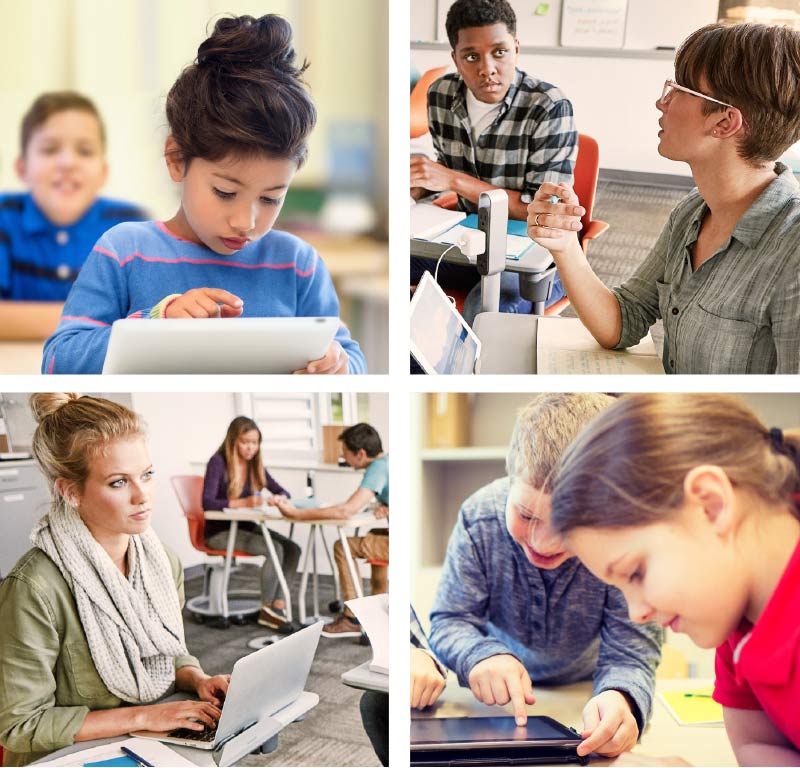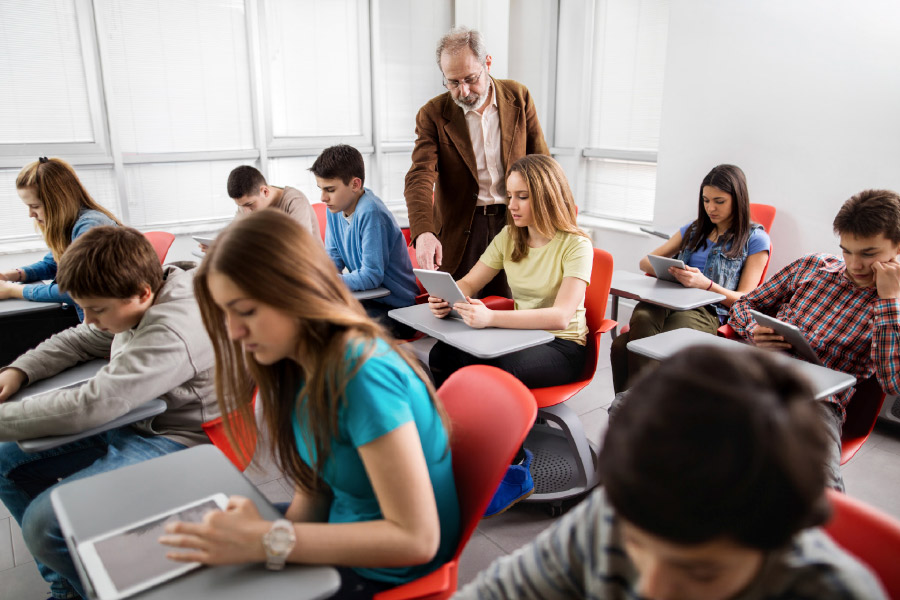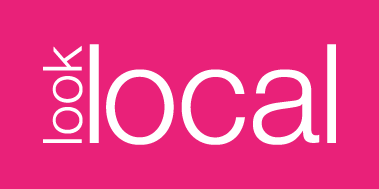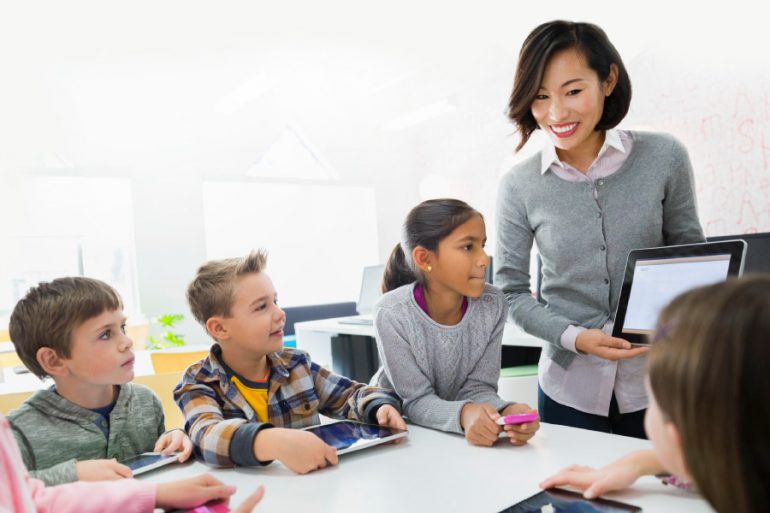Do you remember the thrill that came with pencils racing across a piece of paper as a teacher scribbled notes across the chalkboard? And by thrill, we mean panic. There was never a guarantee one could scribble fast enough to gather that day’s lesson. Then there was the collective moan that came with the sight of an overhead projector – a sure sign students were in for some lengthy notetaking…followed by a hand cramp. Before Dropbox, there was the floppy disk, before iPads – a notebook, and long before the classroom technologies of today, there was the clunky technology of the ‘90s that paved the way.
For students of today, technology has come a long way from colourful, original iMac computer labs and the infamous rolly-cart TV. Modern students have access to everything from virtual field-trips, video conferencing, digital portfolios, online guest speakers, and more. Their technology is a broad term and encompasses many things such as computer hardware, software, and applications as well as large and small machinery including laser cutters, smartphones, iPads, and digital cameras.
Julie Hunt Gibbons, superintendent of secondary program and student success for Halton District School Board, says parents, teachers, students, staff, and community members expect the use of technology in the classroom to enhance both teaching and learning – after all it is the 21st Century and young people today are often described as ‘digital citizens’.
With technology an increasing requirement in almost every industry, it only makes sense that our schools are also effectively deploying mobile technology in the classroom. However, for many schools, implementing the latest technology is a difficult strategy to navigate.

“The biggest challenge in the use of technology in school, as it is globally, is protecting the privacy of all engaged,” says Lisa M. Duranleau, Executive Director at MacLachlan College. Hunt Gibbons agrees, “ensuring the privacy of our students is a priority for our Board. That is why our Board has implemented a software catalogue for our teachers to use. The catalogue identifies “green” tools that teachers can use in their classrooms.” At MacLachlan, acceptable use policies are continuously updated while teachers and students are constantly educated on how to navigate their way through emerging technologies. Other challenges include the choice of tool, equity of access to tools, safety concerns, and staff development.
Despite the challenges, both Lisa and Julie agree technology is an essential component of today’s classroom tool kit. “Utilizing new approaches through inquiry and participatory technology inspires students to ask questions, research, and think critically to find solutions for an evolving world,” says Lisa. Students are exposed to real-world, authentic experiences.
Through virtual field trips, they can travel around the world, understanding and resolving problems as a reflective citizen. Technology has become an incredible tool for critical thinking and problem solving, innovation, creativity and entrepreneurship, and self-directed learning. While technology is the tool, the success of its use is dependent on the facilitators that guide students in their learning – because it’s not just the technology a school has in its classroom but the application of the technology and the learning outcomes.
From kindergarten through to grade 12, Halton students are being exposed to the wonderful benefits of learning through technology. The future of education relies on building a community of collaborators – students, teachers, and parents – and technology is central to community building. While there is no way to predict where technology will go from here, educational leaders are required to morph their practices to best prepare children of today to be global citizens of tomorrow.
by Anneliese Lawton







